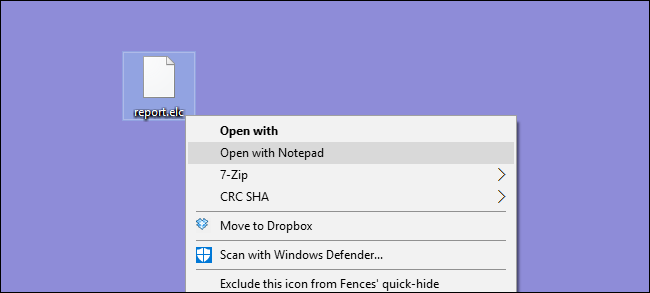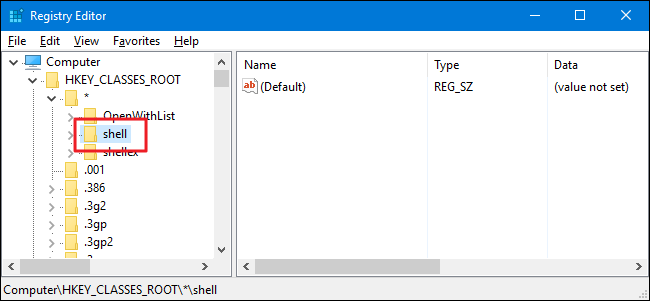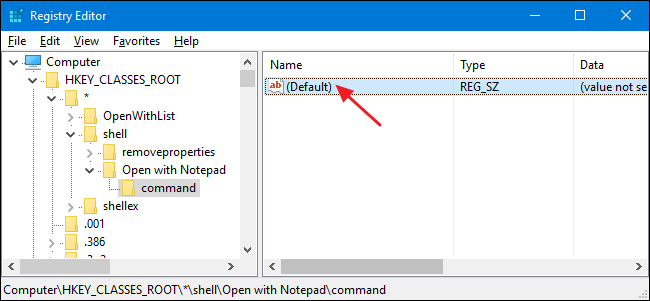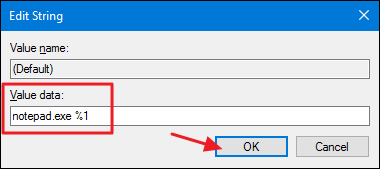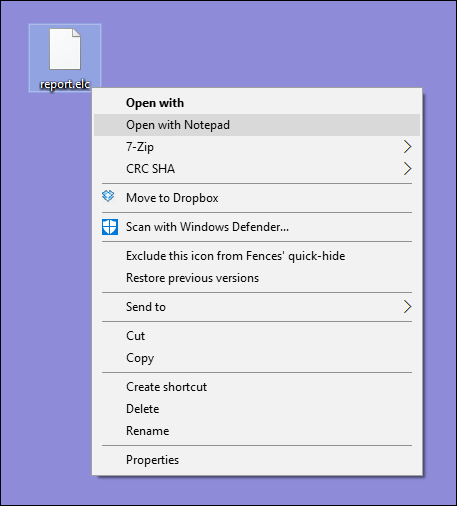How to Add “Open with Notepad” to the Windows Context Menu for All Files
If you want to open a file type not registered with Notepad, you have to click through several options to make it happen. This can be a hassle, so why not add an “Open with Notepad” option right on your context menu?
The context menu you get when you right-click a file in Windows already provides a lot of value, but why not kick it up a notch? We’ve shown you how to add any application to the context menu to open apps quickly and how to customize the “Send To” menu. But if you’ve ever just wanted to open a file for a quick view in Notepad, you can save yourself the bother of having to wade through the “Open With” windows by adding an “Open with Notepad” option to the default context menu for all files. Here’s how to do it.
NOTE: If you find yourself editing config files with Notepad often, you may want to install the free and open source Notepad++. It’ll automatically add an “Open with Notepad++” option to your context menu, and it generally does a better job of formatting config files and other code.
Add “Open with Notepad” to the Context Menu by Editing the Registry Manually
To add the “Open with Notepad” option to the context menu, you just need to make a couple of quick edits in the Windows Registry.
Standard warning: Registry Editor is a powerful tool and misusing it can render your system unstable or even inoperable. This is a pretty simple hack and as long as you stick to the instructions, you shouldn’t have any problems. That said, if you’ve never worked with it before, consider reading about how to use the Registry Editor before you get started. And definitely back up the Registry (and your computer!) before making changes.
Open the Registry Editor by hitting Start and typing “regedit.” Press Enter to open Registry Editor and give it permission to make changes to your PC.
In the Registry Editor, use the left sidebar to navigate to the following key:
HKEY_CLASSES_ROOT\*\shell
Next, you’ll create a new key inside the shell key. Right-click the shell key and choose New > Key. Name the new key “Open with Notepad.”
Now, you’re going to create another new key inside that one. Right-click the new Open with Notepad key and choose New > Key. Name the new key “command.”
With the new command key selected, in the right-hand pane, double-click the (Default) value to open it’s properties page.
In the “Value data” box, type the following text and then click “OK.”
notepad.exe %1
The changes should take place immediately. To test it out, just right-click any file and see if you see the “Open with Notepad” command.
If you want to reverse the changes at any time, just head back into the Registry and delete the Open with Notepad key you created. This will also delete the command key you created inside.
Download Our One-Click Registry Hacks
If you don’t feel like diving into the Registry yourself, we’ve created a couple of registry hacks you can use. The “Add Open With Notepad to Context Menu” hack creates the keys you need to add the “Open with Notepad” command. The “Remove Open With Notepad from Context Menu (Default)” hack deletes those keys, removing the command and restoring the default. Both hacks are included in the following ZIP file. Double-click the one you want to use and click through the prompts.
Open with Notepad Hacks
RELATED: How to Make Your Own Windows Registry Hacks
These hacks are really just the shell key, stripped down to the new keys and values we talked about in the previous section and then exported to a .REG file. Running the hacks just creates or deletes the keys for adding the command to the context menu. And if you enjoy fiddling with the Registry, it’s worth taking the time to learn how to make your own Registry hacks.
